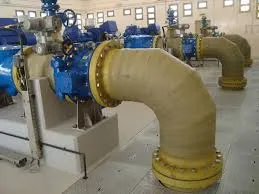
-
 Afrikaans
Afrikaans -
 Albanian
Albanian -
 Amharic
Amharic -
 Arabic
Arabic -
 Armenian
Armenian -
 Azerbaijani
Azerbaijani -
 Basque
Basque -
 Belarusian
Belarusian -
 Bengali
Bengali -
 Bosnian
Bosnian -
 Bulgarian
Bulgarian -
 Catalan
Catalan -
 Cebuano
Cebuano -
 China
China -
 China (Taiwan)
China (Taiwan) -
 Corsican
Corsican -
 Croatian
Croatian -
 Czech
Czech -
 Danish
Danish -
 Dutch
Dutch -
 English
English -
 Esperanto
Esperanto -
 Estonian
Estonian -
 Finnish
Finnish -
 French
French -
 Frisian
Frisian -
 Galician
Galician -
 Georgian
Georgian -
 German
German -
 Greek
Greek -
 Gujarati
Gujarati -
 Haitian Creole
Haitian Creole -
 hausa
hausa -
 hawaiian
hawaiian -
 Hebrew
Hebrew -
 Hindi
Hindi -
 Miao
Miao -
 Hungarian
Hungarian -
 Icelandic
Icelandic -
 igbo
igbo -
 Indonesian
Indonesian -
 irish
irish -
 Italian
Italian -
 Japanese
Japanese -
 Javanese
Javanese -
 Kannada
Kannada -
 kazakh
kazakh -
 Khmer
Khmer -
 Rwandese
Rwandese -
 Korean
Korean -
 Kurdish
Kurdish -
 Kyrgyz
Kyrgyz -
 Lao
Lao -
 Latin
Latin -
 Latvian
Latvian -
 Lithuanian
Lithuanian -
 Luxembourgish
Luxembourgish -
 Macedonian
Macedonian -
 Malgashi
Malgashi -
 Malay
Malay -
 Malayalam
Malayalam -
 Maltese
Maltese -
 Maori
Maori -
 Marathi
Marathi -
 Mongolian
Mongolian -
 Myanmar
Myanmar -
 Nepali
Nepali -
 Norwegian
Norwegian -
 Norwegian
Norwegian -
 Occitan
Occitan -
 Pashto
Pashto -
 Persian
Persian -
 Polish
Polish -
 Portuguese
Portuguese -
 Punjabi
Punjabi -
 Romanian
Romanian -
 Russian
Russian -
 Samoan
Samoan -
 Scottish Gaelic
Scottish Gaelic -
 Serbian
Serbian -
 Sesotho
Sesotho -
 Shona
Shona -
 Sindhi
Sindhi -
 Sinhala
Sinhala -
 Slovak
Slovak -
 Slovenian
Slovenian -
 Somali
Somali -
 Spanish
Spanish -
 Sundanese
Sundanese -
 Swahili
Swahili -
 Swedish
Swedish -
 Tagalog
Tagalog -
 Tajik
Tajik -
 Tamil
Tamil -
 Tatar
Tatar -
 Telugu
Telugu -
 Thai
Thai -
 Turkish
Turkish -
 Turkmen
Turkmen -
 Ukrainian
Ukrainian -
 Urdu
Urdu -
 Uighur
Uighur -
 Uzbek
Uzbek -
 Vietnamese
Vietnamese -
 Welsh
Welsh -
 Bantu
Bantu -
 Yiddish
Yiddish -
 Yoruba
Yoruba -
 Zulu
Zulu
Exploring the Technologies and Innovations in Anchoring Drilling Rods and Bits for Enhanced Performance
Understanding Anchoring, Drilling Rods, and Bits in Geotechnical Engineering
In the field of geotechnical engineering, the use of anchoring systems, drilling rods, and bits plays a crucial role in ensuring the stability and safety of various structures. These components are essential in foundation work, slope stabilization, and underground construction. This article will explore these elements, their functions, and their importance in construction and engineering projects.
Anchoring Systems
Anchoring is a method used to secure structures to the ground, especially in areas where soil conditions may be less than ideal. This technique often employs anchors—devices that are either driven into the ground or grouted into rock formations—to provide stability against forces such as wind, water flow, and seismic activity. There are several types of anchors, including driven anchors, helical anchors, and rock anchors, each tailored to specific soil and load conditions.
The choice of anchoring technique largely depends on the application. For instance, deep foundations often utilize rock anchors, which are drilled into solid rock layers, providing remarkable resistance to tensile forces. Conversely, driven anchors are used in softer soil conditions. Proper analysis and design of the anchoring system are imperative, as they directly affect the performance and longevity of the structure.
Drilling Rods
Drilling rods, also known as drill pipes or casings, are integral to the drilling process. These rods are connected sequentially to achieve the desired depth and facilitate the drilling operation. They serve multiple purposes, including transporting drilling fluids, transmitting rotational power from the drilling rig, and providing structural integrity to the borehole.
anchoring drilling rod and bits

Typically made from high-strength steel, drilling rods are designed to withstand significant torque and tensile forces. The length and diameter of the rods can vary according to the project's scope and the requirements of the geological environment. Advances in manufacturing technology have also led to the development of specialized drilling rods that enhance performance, such as those with coatings to resist corrosion or those optimized for specific soil conditions.
Drill Bits
At the end of the drilling rod, a drill bit is attached to perform the actual cutting through soil and rock. Drill bits come in various shapes and sizes, each designed for different types of soil or rock formations. The primary types of bits include rotary bits, core bits, and percussive bits, among others. Rotary bits, equipped with sharp teeth, are commonly used for softer sediments, while core bits are used to extract cylindrical samples of rock.
The selection of the appropriate drill bit is essential for maximizing efficiency and minimizing costs. An unsuitable bit may lead to wear and tear of the drilling rods and an increase in the time required to complete the drilling process. Engineers must consider several factors, including the type of material to be drilled and the specific drilling method being employed.
Conclusion
The combination of anchoring systems, drilling rods, and bits forms the backbone of successful geotechnical projects. Each element plays a crucial role in ensuring that structures are securely anchored and that drilling operations proceed smoothly and efficiently. As technology continues to advance, the design and manufacturing of these components are becoming increasingly sophisticated, leading to enhanced performance and reliability. Understanding the intricacies of anchoring, drilling rods, and bits is vital for engineers and construction professionals in their quest to build safe and sustainable structures.
Latest news
-
Oblate Tanks: Space-Saving, Durable Liquid Storage SolutionsNewsAug.27,2025
-
High-Performance Piping System Solutions for Industry & Commercial UseNewsAug.26,2025
-
Precision Fittings: Durable & Reliable Industrial & Plumbing SolutionsNewsAug.25,2025
-
Practical Steps: Unlock Success with Our Proven GuidesNewsAug.24,2025
-
Transport Tanks: Safe, Durable & Efficient Liquid HaulingNewsAug.23,2025
-
High-Quality Piping Systems for Efficient Flow & DurabilityNewsAug.22,2025









